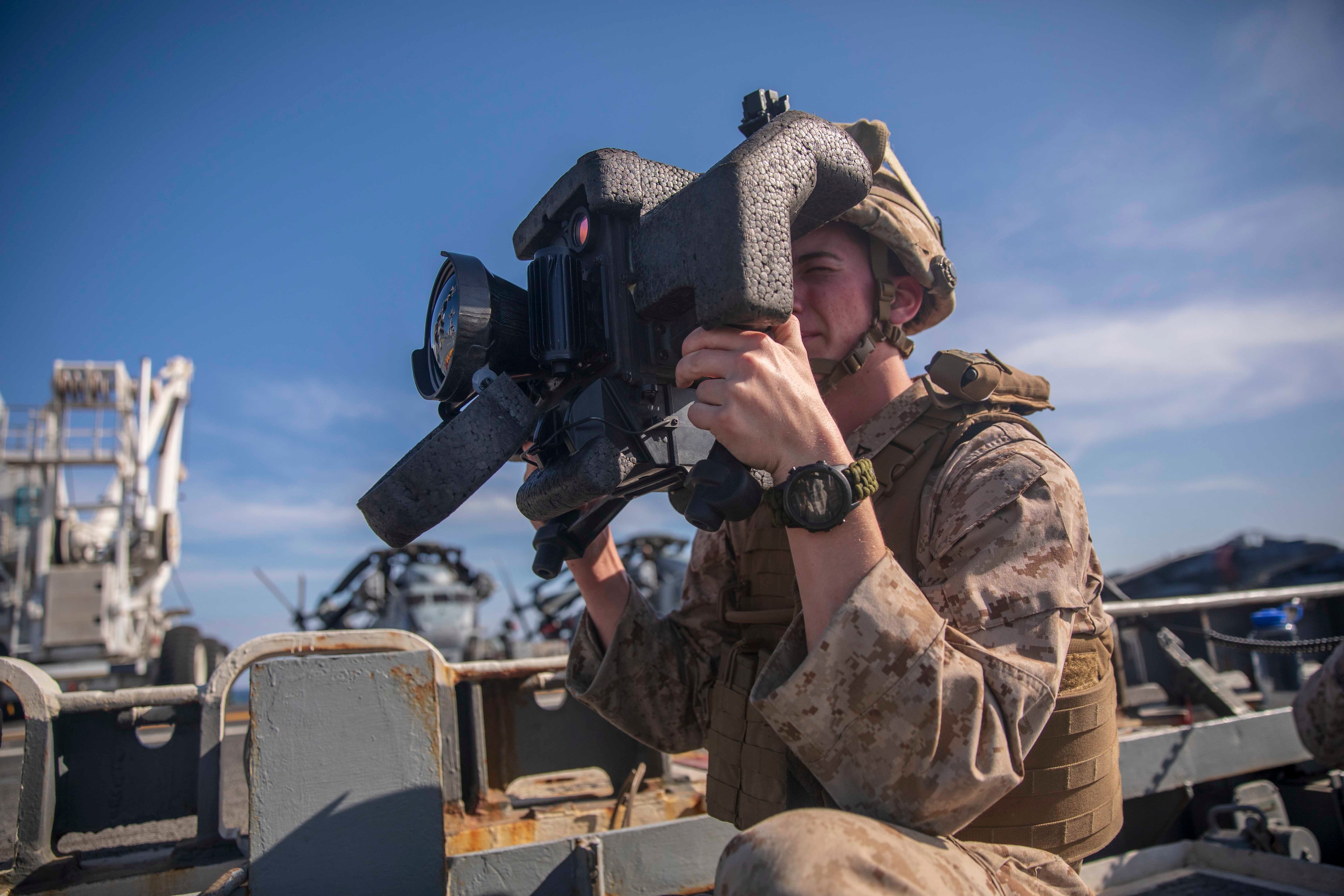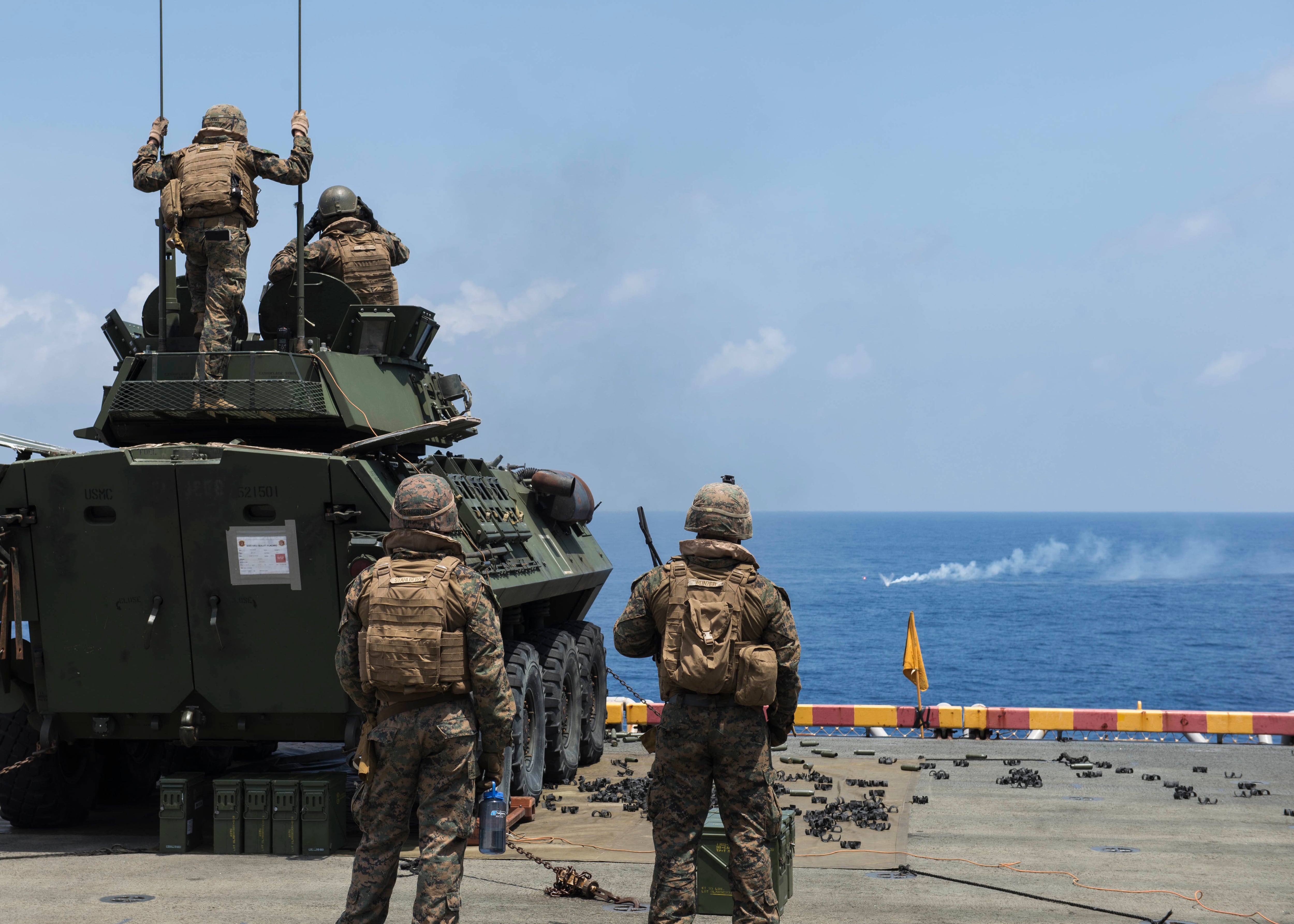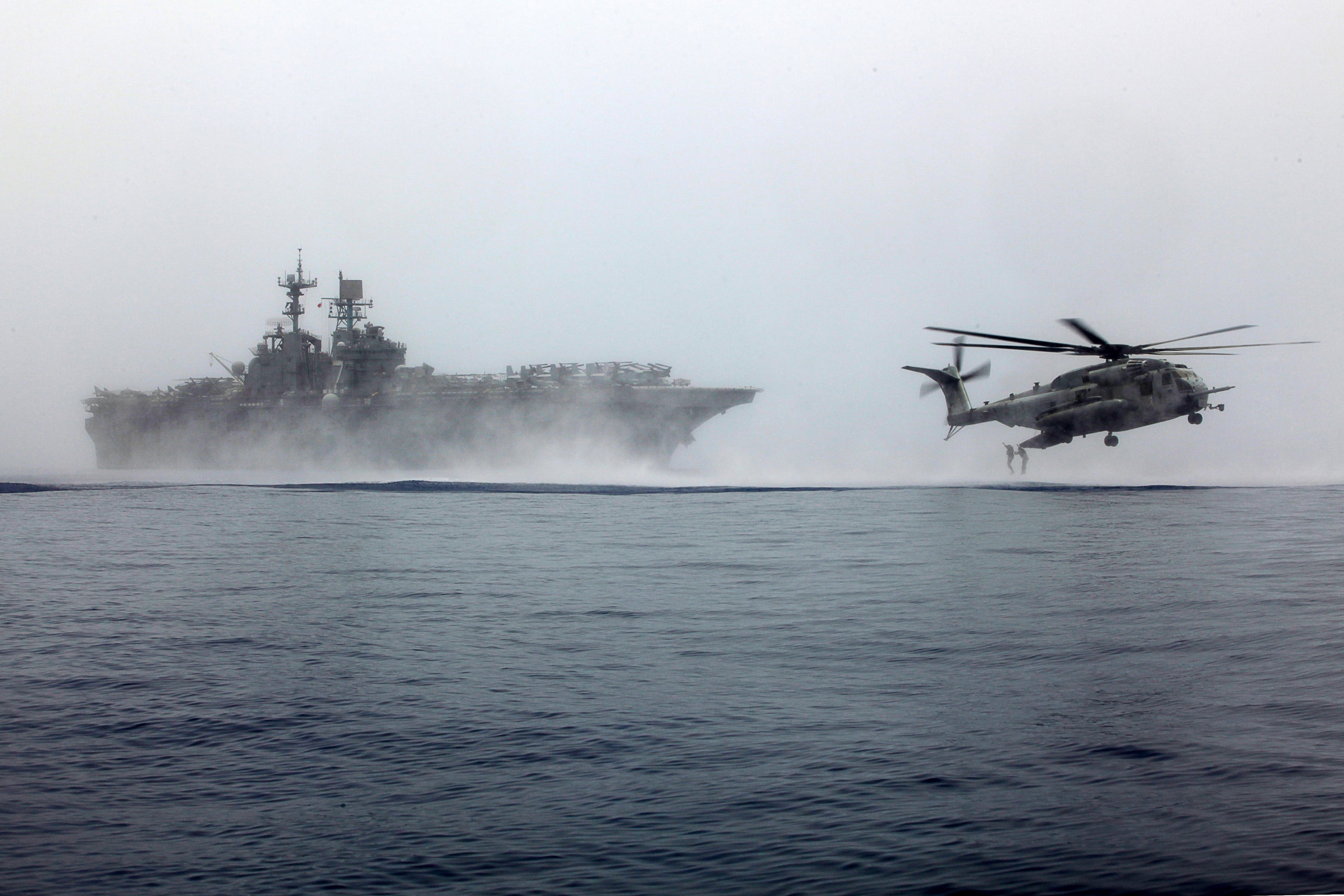The threat of small boat or drone boat attacks may have been on the minds of Marines with the 24th Marine Expeditionary Unit in early 2015, as it operated off the coast of Yemen.
As Yemen’s civil war engulfed the country in 2015, Marines with the 24th MEU tested a concept to bolster ship security using an anti-tank missile system known as a Javelin.
The details of what the Corps described as a “proof of concept” security tactic were laid out in a command chronology for the 24th MEU, which was obtained through a government records request.
As the Avenger-class mine countermeasures ship Sentry began to transit the Bab el-Mandeb strait around April 28, 2015, the MEU sent a Javelin system and Marines with 3rd Battalion, 6th Marines, to bolster the ship’s existing security.
The anti-tank Javelin system was described in the MEU’s chronology as “an additional capability the ship did not have."
It’s unknown if the this is the first instance of the Corps using Javelin systems on the decks of Navy ships during transits of tight waterways. The 22nd MEU transited the Strait of Hormuz earlier in 2019 with a Marine operating the optic of a Javelin system on the flight deck of the Wasp-class amphibious assault ship Kearsarge.

The anti-tank system may have been sent to the Sentry to defend against small boat or drone boat threats as the ship traversed the narrow Bab el-Mandeb waterway near the Yemen coast.
The region has been the site of several small boat attacks over the past several years, as pirates and Iranian-backed Houthi rebels in Yemen have harassed coalition and commercial ships.
On Oct. 25, 2016, the liquefied natural gas tanker Galicia Spirit was attacked by a an explosive-laden skiff using small arms, Reuters reported. The small skiff eventually exploded, ending the attack, according to the Reuters story.
RELATED

A Jan. 30, 2017, attack on the Saudi frigate Al Madinah in the Red Sea was carried out by a drone boat packed with explosives, Defense News reported.
Vice Adm. Kevin Donegan, then-commander of the Bahrain-based U.S. Fifth Fleet, told Defense News that Saudi frigate attack may have been the first confirmed use of a drone boat attack. He also said he believed the tech was being supplied to the Houthis by Iran.
Using a Javelin to take out a small boat could present some challenges.
Maximilian Uriarte, the creator of Marine humor comic known as “Terminal Lance,” told Marine Corps Times that a speed boat might be too small and fast for the Javelin system, which was designed to take out tanks.
Uriarte served in the Corps as an 0351 assaultman, and told Marine Corps Times that he trained on the Javelin, but did not consider himself an expert on the system. Marines who don the 0352 anti-tank missile gunner job are more familiar with the Javelin.
A Marine Raider, who spoke to Marine Corps Times on condition of anonymity said that the Javelin could “f*ck up” a small boat.
The optic system used by the Javelin could also be beneficial for tracking and surveilling targets.
The Corps described its experiment with the Javelin aboard the Sentry as a proven success in the chronology.
RELATED

Yemen has been battling a bloody civil war pitting Houthi rebels against the Yemen government and its President Abdrabbuh Mansour Hadi. Some of the dispute centers around a failed power handover, and Houthi discontent with the government’s ability to combat al-Qaida militants.
The Houthis have been in control of Yemen’s capital of Sanaa since February 2015.
The 24th MEU had a few encounters with ships around Yemen and in the Gulf of Aden during its 2015 deployment.
On April 16, 2015, the Wasp-class amphibious assault ship Iwo Jima was tasked with providing security for the Sentry while it supported a “flagless skiff which was adrift in the Gulf Aden,” the MEU chronology detailed.
The MEU’s maritime raid force boarded the ship and entered about 80 males into a biometrics system while engineers repaired the ships engine, according to the chronology.
On April 19, 2015, the MEU conducted a “show of presence” operation with air assets against an Iranian convoy suspected of carrying arms for Houthi rebels, according to the chronology. The Iranian arms convoy turned around.
Shawn Snow is the senior reporter for Marine Corps Times and a Marine Corps veteran.




